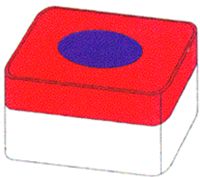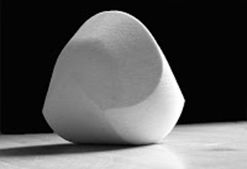Three-dimensional ("3D") figures are the shapes that can be registered as a trademark, although they are not perceived as conventional trademarks. They are mentioned as non-conventional trademarks and trademarks like these also have to conforms to the conditions in Article 4 of the Turkish IP Code (Law No.6769); "signs are capable of distinguishing the goods or services of one undertaking from those of other undertakings and being represented on the register in a manner to determine the clear and precise subject matter of the protection afforded to its proprietor." In addition to this, product shapes and packaging are usually protected via registration of industrial designs up to twenty-five years. Since the design registrations become public at the end of the protection period, the IP holders prefer trademark registrations for the designs that they want to protect for a long time and are identified with the product itself.
As a matter of fact, in European Union law, in accordance with precedent Court of Justice of the European Union ("CJEU") case-law, it is stated that "3D trademarks" can be registered just like other trademarks. Per Article 4 of the latest Directive (EU) 2015/2436, titled 'Grounds for refusal or invalidity ', lays the conditions for trademarks that cannot be registered:
"1. The following shall not be registered or, if registered, shall be liable to be declared invalid: ...
e) signs which consist exclusively of:
(i) the shape, or another characteristic, which results from the nature of the goods themselves.
(ii) the shape, or another characteristic, of goods which is necessary to obtain a technical result.
(iii) the shape, or another characteristic, which gives substantial value to the goods;"
However, before the previous Directive (EU) 2008/95, which was canceled, the shapes of products could not be registered as a trademark in Turkish law. With the transposition of the Directive to the domestic law, 3D trademarks were able to be registered. According to Article 3 of Directive (EU) 2015/2436, "the shape of goods and packaging" is accepted to be registered as a trademark. Also, per Article 4 of Regulation (EU) 2017/1001, it is foreseen that the shape of goods and packaging can be registered as a trademark provided that they are distinctive.
According to Article 4 of the Turkish IP Code, the expressi"the shape of goods and packaging" allows the registration of 3D trademarks possible. With this article, it is stated that the trademark may consist of any type of shape, which is the form of goods or packaging:
"Trademarks may consist of any signs like words, including personal names, figures, colors, letters, numbers, sounds and the shape of goods or their packaging, provided that such signs are capable of distinguishing the goods or services of one undertaking from those of other undertakings and being represented on the register in a manner to determine the clear and precise subject matter of the protection afforded to its proprietor."
In Turkish law, the Court of Cassation stated that 3D trademark registration is possible and stated the terms in the FERRERO ROCHER Decision. (11th Circuit of Court of Cassation, Prec. 2018/4555, Dec. 2019/6120, and Date 2.10.2019):
"the matter in dispute is that of the shape that can distinguish the goods or services of an undertaking from another undertaking (...) the shape is visual of the packaging of the product and the shape does not have a condition that defines the product itself (...) it cannot be said that it shows the variety, kind, qualification, quality, quantity, purpose and other characteristics of the goods"
As it is seen in the abovementioned settled case-law, for the product shapes to be registered as a 3D trademark, they must have a distinctive and original shape from similar products.
For instance, in the decision involving HENKEL (CJEU, C-144/06), CJEU ruled that the dishwashing product in tablet form in 3D shape is not distinctive enough for average consumers for registered as a trademark. The 3D trademark applied for is the figurative mark depicted below ('the mark applied for'):

Therefore, for the trademark to be registered, its ability to show the commercial source of the goods must be perceived by the relevant public. Otherwise, the trademark cannot be registered because it does not provide the conditions of the distinctiveness. Although, doctrinally, 3D trademarks can be registered on the condition that they are distinctive and not in appearance generating the natural structure of the goods. But if the 3D trademark comprises of an overall and ordinary mark or just for functional purposes and have no distinctiveness from over other goods of undertakings, the registration of this kind of 3D marks are not possible as a trademark.
For instance, in the decision involving KİTKAT, Court of Appeal in Turkey ruled that the chocolate bar product, which is subject of the trademark application, has no distinctiveness, and therefore it could not be registered as a 3D trademark. (11th Circuit of Court of Cassation , Prec. 2010/7855, Dec. 2012/273, and Date 17.01.2012).
On the other hand, an application of 3D trademark registration is evaluated as same as the application of other trademarks and also the same qualifications will be required. However, the related average consumers are not in the habit of making assumptions about the origin of products based on their shape. Thus, the demonstration of 3D trademark distinctiveness is more difficult than traditional trademarks which consist a word or figurative shapes.
As a matter of a fact, BIC SA Decision (CJEU, T-262/04), CJEU stated that; "it must be observed that, for the purpose of applying those criteria, the relevant public's perception is not necessarily the same in relation to a three-dimensional mark consisting of the shape of the product itself as it is in relation to a word or figurative mark consisting of a sign which is independent of the appearance of the products it denotes. Average consumers are not in the habit of making assumptions about the origin of products on the basis of their shape or the shape of their packaging in the absence of any graphic or word element and it could, therefore, prove more difficult to establish distinctiveness in relation to such a three-dimensional mark than in relation to a word or figurative mark."
Furthermore, on 23 April 2020, the Court of Justice of the European Union (CJEU) gave a ruling in GÖMBÖC, C-237/19, ECLI:EU:C:2020:296 :
(concerning the interpretation of Article 3(1)(e)(ii) and (iii) of the previous Directive 2008/95 - abovementioned Article 4(1)(e)(ii) and (iii) of latest Directive 2015/2436).
Gömböc Decision.
The Decision is relating to the rejection by the latter of the application made by Gömböc Kft. for registration of the product's own shape as a 3D trademark.
First, I would like to point out that "Gömböc" is a convex three-dimensional homogeneous body, that it can be seen from the image below. It has occurred as a consequence of mathematical computing with only two equilibrium points (one stable and one unstable) which always returns to its initial position on a horizontal surface.

On 5 February 2015, Gömböc Kft. filed a 3D trademark application about goods in classes 14 (decorative items), 21 (decorative crystal ware and chinaware) and 28 (toys) of the Nice Agreement for the Gömböc sign to Hungarian Intellectual Property Office ("HIPO").
HIPO has decided that, as regards the 'toys' in Class 28, the shape of this product will be perceived as a shape that necessary to achieve the specified technical result but not as a trademark by the related consumers; "the three-dimensional shape of the object allowed it to function as a toy whose principal feature is that it always returns to its point of stable equilibrium. Accordingly, all the elements of the sign at issue were designed in order to obtain that technical result, that is to say, they serve a technical function. The informed and reasonable consumer will, therefore, perceive the sign at issue as a shape necessary to obtain the technical result sought by the object that that sign represents."
Secondly, with regards to the 'decorative items' in Classes 14 and 21, the Office stated that "the three-dimensional shape represented in the sign at issue embodied a striking and attractive shape, which is an essential element in the marketing of the goods in question." and decided the value of Gömböc resides in that shape.
The application was entirely rejected by the Office due to Article 3(1)(e)(ii) and (iii) of the previous Directive 2008/95. Gömböc Kft brought the matter of dispute to the CJEU after the decision had been finally rejected by the Hungarian Court of Appeal. The CJEU made evaluations in the light of the questions that were posed.
CJEU, to sum up, stated that the factors which add value to the product, should take their source from the shape of product; "In that regard, it should be noted that it is in no way inconceivable that the substantial value of this type of item may result from factors other than its shape, such as, inter alia, the story of its creation, its method of production, whether industrial or artisanal, the materials that it contains, which may be rare or precious, or even the identity of its designer." Also stated that "the presumed perception of the sign at issue by the average consumer is not, in itself, a decisive element when applying the ground for refusal set out in Article 3(1)(e)(iii) of Directive 2008/95, it may, nevertheless, be a useful criterion of assessment for the competent authority in identifying the essential characteristics of that sign.". Furthermore, both design and trademark protection can exist in the same shape of the product and does not warrant an automatic refusal for trademark registration; "It is apparent from the above that the fact that the appearance of a product is protected as a design does not prevent a sign consisting of the shape of that product from benefiting from protection under trademark law, provided that the conditions for registration of that sign as a trademark are satisfied."
Consequently, according to the above-mentioned expositions, current legal regulations, practices, and judicial decisions; remarkable substantial trademark protection is applied for the 3D trademarks in both Turkish and European Union Law. Although in 3D trademark registrations, a different assessment is not made from other trademark types. However, proving distinctiveness of 3D trademarks are much harder than the trademarks which consist of a word or figurative shape by the reason of the perception of average consumers and individuality of shape of the product. Additionally, it is essential that should not contain the natural appearance of the product and be in the required form to achieve a technical result. Moreover, as it is seen in the related abovementioned decisions, CJEU makes more detailed examination of the registrability of 3D trademarks and exhibits an obdurate stance on the distinctiveness of 3D trademarks.
The content of this article is intended to provide a general guide to the subject matter. Specialist advice should be sought about your specific circumstances.


